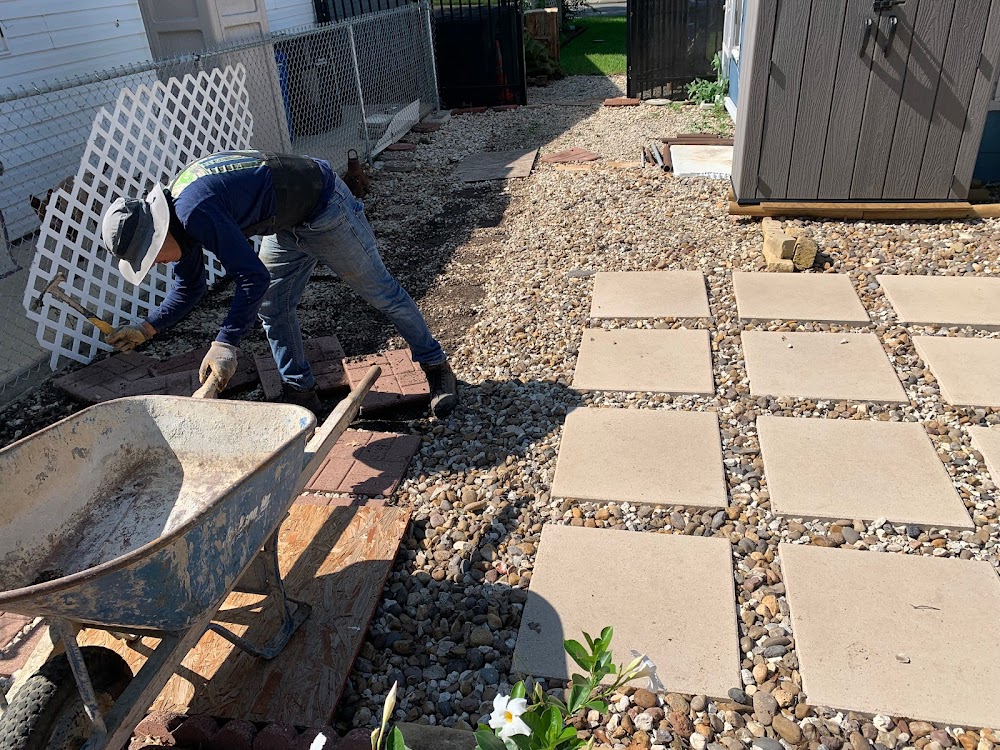-
Table of Contents
Mastering the Mix: Harmonizing Design Styles in Your Home.
Mastering the Mix: Combining Different Design Styles in Your Home
Combining different design styles in your home can create a unique and visually appealing space that reflects your personal taste and style. By blending various design elements, you can achieve a harmonious balance that adds depth and character to your living environment. Whether you prefer a modern and minimalist aesthetic or a more eclectic and bohemian vibe, mastering the mix of different design styles allows you to create a truly personalized and inviting home. In this article, we will explore some tips and ideas for successfully combining different design styles in your home.
Harmonizing Traditional and Modern Design Elements in Your Home
Harmonizing Traditional and Modern Design Elements in Your Home
When it comes to interior design, many homeowners find themselves torn between traditional and modern styles. Traditional design exudes elegance and timelessness, while modern design embraces simplicity and sleekness. However, there is no need to choose between the two. By combining traditional and modern design elements, you can create a harmonious and unique space that reflects your personal style.
One way to achieve this harmonious blend is by selecting furniture pieces that incorporate both traditional and modern elements. For example, you could opt for a classic wingback chair upholstered in a modern fabric or a sleek, contemporary sofa paired with a traditional coffee table. By mixing and matching furniture styles, you can create a visually interesting and balanced look.
Another way to harmonize traditional and modern design elements is through the use of color. Traditional design often features rich, warm colors such as deep reds, browns, and golds, while modern design tends to favor neutral tones and bold pops of color. To strike a balance between the two, consider using a neutral color palette as a base and incorporating pops of color through accessories such as pillows, artwork, or rugs. This allows you to maintain the timeless elegance of traditional design while adding a modern twist.
In addition to furniture and color, lighting plays a crucial role in creating a harmonious blend of traditional and modern design elements. Traditional design often features ornate chandeliers or sconces, while modern design embraces clean lines and minimalist fixtures. To combine the two, consider using a mix of traditional and modern lighting options throughout your home. For example, you could hang a modern pendant light in a traditional dining room or place a traditional table lamp on a sleek, modern side table. This juxtaposition of styles adds visual interest and creates a cohesive look.
When it comes to accessories, striking a balance between traditional and modern design elements is key. Traditional design often incorporates ornate, decorative accessories such as vases, sculptures, or antique pieces, while modern design favors clean, minimalist accents. To achieve a harmonious mix, choose a few statement pieces that blend both styles. For example, you could display a modern sculpture on a traditional mantel or place a sleek, contemporary vase on a vintage sideboard. By carefully selecting and arranging accessories, you can create a cohesive and visually appealing space.
Lastly, don’t forget about the importance of texture in combining traditional and modern design elements. Traditional design often features rich, textured fabrics such as velvet or silk, while modern design embraces smooth, sleek materials like leather or metal. To strike a balance, incorporate a mix of textures throughout your space. For example, you could pair a plush, traditional rug with a sleek, modern leather sofa or layer different textured pillows on a traditional upholstered chair. This combination of textures adds depth and visual interest to your home.
In conclusion, harmonizing traditional and modern design elements in your home allows you to create a unique and visually appealing space that reflects your personal style. By carefully selecting furniture, colors, lighting, accessories, and textures, you can achieve a harmonious blend that seamlessly combines the elegance of traditional design with the simplicity of modern design. So go ahead and master the mix – your home will thank you for it.
Blending Minimalist and Eclectic Styles for a Unique Home Decor
Blending Minimalist and Eclectic Styles for a Unique Home Decor
When it comes to home decor, many people find themselves torn between different design styles. Some are drawn to the clean lines and simplicity of minimalist design, while others are captivated by the vibrant colors and eclectic mix of patterns in an eclectic style. But who says you have to choose just one? By combining minimalist and eclectic styles, you can create a unique and visually stunning home decor that reflects your personal taste and style.
One of the key principles of minimalist design is simplicity. Minimalist interiors are characterized by clean lines, neutral colors, and a clutter-free environment. On the other hand, eclectic design embraces a mix of different styles, colors, and patterns. It is all about creating a visually interesting space that tells a story. While these two styles may seem contradictory at first, they can actually complement each other quite well.
To successfully blend minimalist and eclectic styles, start by focusing on the basics. Choose a neutral color palette for your walls and larger furniture pieces. This will provide a clean and simple backdrop for your eclectic accessories and decor items. White, beige, and gray are popular choices for minimalist interiors, but don’t be afraid to experiment with other muted tones as well.
Once you have established a neutral base, it’s time to bring in the eclectic elements. Start by selecting a few statement pieces that reflect your personal style. These could be bold patterned rugs, unique artwork, or vintage furniture. The key is to choose items that you truly love and that speak to you on a deeper level. These pieces will serve as the focal points of your space and will add personality and visual interest to your minimalist decor.
When it comes to combining different design styles, balance is key. Make sure that your eclectic pieces are evenly distributed throughout the space and that they don’t overwhelm the minimalist elements. For example, if you have a bold patterned rug in the living room, balance it out with simple and streamlined furniture. Similarly, if you have a vibrant piece of artwork on one wall, keep the other walls clean and uncluttered.
Another way to blend minimalist and eclectic styles is through the use of textures. Minimalist interiors often feature smooth and sleek surfaces, while eclectic design embraces a mix of textures. By incorporating textured elements such as woven baskets, velvet cushions, or a shaggy rug, you can add depth and visual interest to your minimalist decor. Just make sure to choose textures that complement each other and create a cohesive look.
In conclusion, blending minimalist and eclectic styles can result in a unique and visually stunning home decor. By starting with a neutral base and adding in eclectic elements that reflect your personal style, you can create a space that is both simple and visually interesting. Remember to maintain balance and harmony between the two styles, and don’t be afraid to experiment with textures and patterns. With a little creativity and a keen eye for design, you can master the mix and create a home that is truly one-of-a-kind.
Creating a Cohesive Look by Mixing Vintage and Contemporary Design in Your Space
Creating a Cohesive Look by Mixing Vintage and Contemporary Design in Your Space
When it comes to designing your home, there are countless styles to choose from. Some people prefer the sleek and modern look of contemporary design, while others are drawn to the charm and character of vintage pieces. But why limit yourself to just one style? By combining vintage and contemporary design elements, you can create a unique and cohesive look that reflects your personal style.
One of the key aspects of successfully mixing different design styles is finding a balance between the old and the new. You want to create a space that feels harmonious and not disjointed. Start by selecting a few key vintage pieces that you love and build your design around them. These pieces will serve as the focal points of your space and set the tone for the rest of your design.
When incorporating vintage pieces into a contemporary space, it’s important to consider scale and proportion. Vintage furniture tends to be larger and bulkier than its modern counterparts, so be mindful of how these pieces will fit into your space. You may need to make adjustments to the layout or choose smaller vintage pieces to ensure a balanced look.
Another way to create a cohesive look is by using color. Choose a color palette that complements both vintage and contemporary design elements. For example, if you have a vintage sofa with a bold floral pattern, you can pull colors from the fabric and use them in your contemporary accessories or artwork. This will help tie the two styles together and create a sense of unity in your space.
Texture is another important element to consider when mixing design styles. Vintage pieces often have a lot of texture, whether it’s in the form of worn leather, distressed wood, or intricate detailing. By incorporating contemporary pieces with smooth surfaces or sleek lines, you can create an interesting contrast that adds depth and visual interest to your space.
One of the benefits of mixing vintage and contemporary design is the opportunity to repurpose and upcycle old pieces. Vintage furniture can be given a fresh new look with a coat of paint or reupholstering. By updating these pieces, you can seamlessly integrate them into your contemporary space while still preserving their unique charm.
Accessories play a crucial role in tying together different design styles. Choose accessories that bridge the gap between vintage and contemporary, such as a modern lamp on a vintage side table or a vintage mirror paired with contemporary artwork. These small details can make a big impact and help create a cohesive look.
Lastly, don’t be afraid to experiment and have fun with your design. Mixing different styles allows you to express your creativity and create a space that is truly unique to you. Trust your instincts and choose pieces that you love, regardless of whether they fit into a specific design category. After all, the most important thing is that your home reflects your personal style and makes you feel comfortable and happy.
In conclusion, combining vintage and contemporary design elements can result in a cohesive and visually interesting space. By finding a balance between the old and the new, considering scale and proportion, using color and texture effectively, repurposing old pieces, and carefully selecting accessories, you can create a home that is a true reflection of your personal style. So go ahead, master the mix and create a space that is uniquely yours.In conclusion, mastering the mix of different design styles in your home can create a unique and visually appealing space. By carefully selecting and combining elements from various styles, you can achieve a harmonious balance that reflects your personal taste and creates a welcoming atmosphere. Whether it’s blending modern and traditional, or mixing rustic and contemporary, the key is to maintain a cohesive theme and consider the overall flow and functionality of the space. With careful planning and attention to detail, combining different design styles can result in a truly stunning and individualized home.









